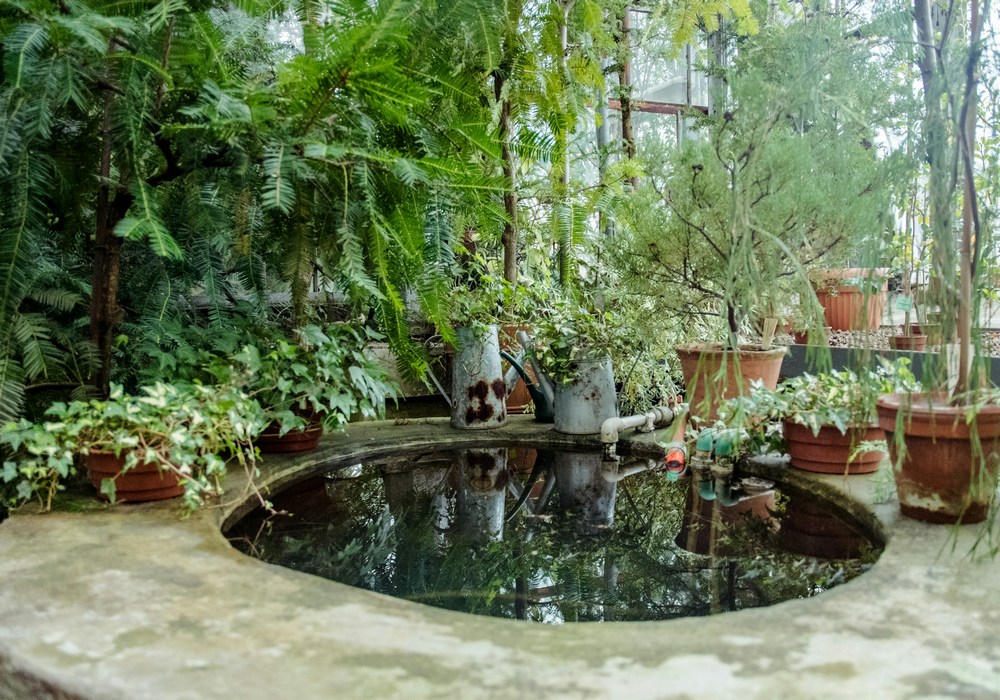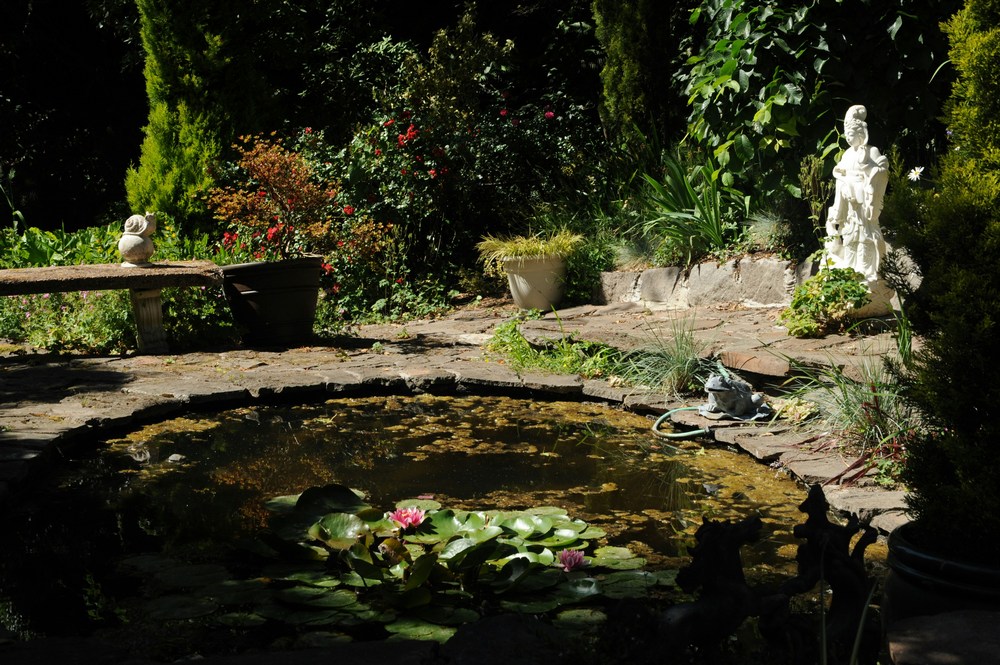Last Updated on October 21, 2025 by teamobn
Picture this: You’re standing in your garden, admiring your newly completed, do-it-yourself masterpiece. It’s not a deck or a garden shed — it’s a vibrant, living ecosystem. A beautiful water feature that you have built. Fish dart beneath lily pads. The sound of trickling water fills the air. This isn’t just a project; it’s a slice of nature you’ve crafted with your own hands.
A garden pond is perhaps the highest test of a DIY person’s ingenuity and a fitting reward for their endeavors. The combination of creativity and ecology in your backyard turns it into an aquatic environment. Though it is more than just a water feature, it’s a living art structure that changes with time and with every season’s onset.
Have you been considering building a water feature in your garden? It’s a very rewarding project that pays dividends season after season, year after year. Let’s explore how to devise, build, and nurture your pond paradise.
Contents
Planning and Partnering for Your Pond
Creating a thriving pond starts with smart planning. First, choose a location that balances sunlight and shade. Aim for a spot that receives a few hours of direct sunlight daily—this sweet spot promotes healthy aquatic plants while minimizing excessive algae growth. Avoid areas with overhanging trees to prevent falling leaves from polluting your water.
When designing your pond, consider its size, shape, and the wildlife you want to attract. Incorporate shallow areas for birds to bathe and deeper sections for fish to thrive. This variety not only enhances biodiversity but also simplifies freshwater reservoir maintenance, a crucial skill for any pond owner.
As you plan, think about the long-term care your pond will need. The principles of freshwater reservoir maintenance apply here: regular cleaning, water quality monitoring, and ecosystem balance are key. Consider how you’ll access different areas of the pond for these tasks.
Don’t forget that the pond in your garden isn’t just an artistic feature… it’s a living aquatic habitat. By carefully considering these factors from the start, you’re setting the stage for a beautiful, low-maintenance aquatic haven that will bring joy for years to come. Ready to start digging?
Building the Pond
Careful planning and execution entails a garden pond construction. Here’s a detailed step-by-step guide to ensure you lay a solid foundation for your aquatic haven:
- Marking the Layout:
- Use a garden hose (or hoses) to outline your pond’s shape on the ground directly if you do not have a long enough rope.
- Consider aesthetic elements such as viewing angles from your home and natural integration into the existing landscape.
- Excavation:
- Dig within the marked outline, creating varying depths: shallow areas for marginal plants and deeper zones (at least 24 inches) for fish.
- Gradually slope the sides so that the wildlife in your area has easy access.
- Installing the Liner:
- Place the liner and ensure that it is flat on the ground and free from folds, as this is where dirt will accumulate.
- Anchor the liner at the bottom with large rocks or specific liner edging to prevent the liner from slipping over the ground.
- Setting Up Filtration and Aeration Systems:
- Have a quality filtration system. Submersible filters work well for smaller ponds, while exterior filters are an option for larger ones.
- Consider adding an aeration system to enhance oxygen levels, which is essential for fish health and water clarity.
- Water Addition:
- Water must be poured into the pond gradually to avoid shifting the liner. Occasionally stir the water and keep this open for 24 hours to allow the chlorine to dissipate.
- Look for leakage or changes in the liner as the water in the tank increases.
- Testing and Adjustments:
- Days later, measure the pH levels and administer treatments to ensure an appropriate environment for your plants and fish.
- Tweak the pump as needed so it becomes more efficient.
Seasonal Care
The changing seasons can impact pond health and maintenance.
- Spring Preparation:
- Take out any organic matter and debris that have accumulated over the winter.
- Restart any equipment, such as pumps and filters, turned off during the winter, ensuring it operates smoothly. Act on any needed repairs and then inspect every piece of equipment for wear.
- Summer Management:
- Higher temperatures can cause rapid algae growth in summer. To manage nutrients and oxygen levels, increase the frequency of water quality tests and adjust your cleaning schedule accordingly.
- Ensure your water level remains consistent, topping up as necessary during dry spells, but always with dechlorinated water to protect your aquatic life.
- Autumn Adjustments:
- Prepare for leaf fall by installing netting over the pond to catch leaves before they can enter the water. Regularly empty the net as needed.
- Reduce feeding your fish as their metabolism begins to slow with the dropping temperatures, which helps maintain better water quality.
- Winterization:
- Depending on your climate, you may need to remove all pumps susceptible to ice and keep them inside. Swap for a bubbler or pond heater to prevent your fish from freezing to death.
- Clip plants in the water to limit organic matter accumulation in the pond. When it accumulates, it can rot and emit dangerous gasses beneath the ice.

Troubleshooting Common Issues
The worst might still happen no matter how well-maintained a pond has been. So, prepare for anything that can come up.
- Leaky Liner:
- Identifying a leak can be tricky. Inspect the pond perimeter for moisture. If there is a leak, fill the pond with water again, mark the average water line, and check this level the next day.
- You can use repair kits to patch the gaps without replacing the liner for minor holes.
- Cloudy Water:
- The water may become discolored due to overfeeding, fish waste, or algae growth. Test the water chemistry and adjust the feeding and cleaning routine accordingly.
- Add more plants that naturally filter the water.
- Overgrown Plants:
- Regularly prune plants taking over the space to maintain balance in your pond’s ecosystem. Overgrown plants can strangle other life by depleting oxygen and nutrients.
- If certain plants are consistently problematic, consider replacing them with less invasive species that are easier to control.
- Fish Health Issues:
- Watch for symptoms like listlessness, surface gasping, or visible sores indicating disease or poor water quality.
- Use prescribed medications to keep the pond balanced and only seek veterinary advice as required.
Conclusion
When building and maintaining a garden pond, gardening becomes much more than a home project. It turns your backyard into an ecosystem where fish and plants thrive together, bringing out a sense of happiness drawn from nature. Your garden pond can grow into a thriving ecosystem that draws wildlife and wows guests if you put in the necessary effort and employ the appropriate tactics.
Motivated and ready to start?






